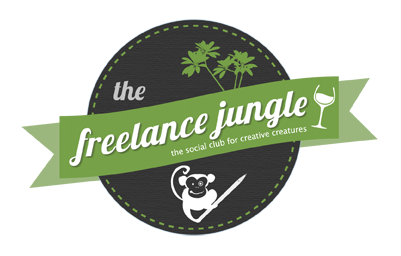Freelancing is a tough gig. Navigating troublesome freelance clients is a lot of why it is so tough. There’s nothing worse than that sinking sensation of realising the client you’ve just engaged is going to be hell.
But we don’t have to accept troublesome freelance clients as a standard feature of self-employment. We can play a role in turning the situations around. We can also get better at choosing what situations are right for us and therefore avoid them.
There are a few tall-tale signs of troublesome freelance clients to look for. Here they are in full glorious colour- and some ways you might be able to turn it around
The brief is wibbly-wobbly
Welcome to the most common problem of all, the brief that isn’t a brief after all.
If your inbox starts filtering through a massive amount of emails that barely have a whiff of connective tissue, if there is meeting after meeting prior to engagement and/or in the initial stages, or if what is written down looks suspiciously under-nourished, you have to dig through a lot of crap to get somewhere.
The problem is, many of us say yes to the work, assume things are OK and don’t dig into the detail until it takes time to crack it open. Depending on whether you’ve waited for the them pay the deposit or perhaps you’ve had scheduling to take care of, there could be a world between booking the job and getting to the job.
Then, it becomes that weird icky cringe feeling of going back to ask for more detail.
Or we feel like that regardless of the gap because someone stitched us a throw pillow once stating, “the client is always right”.
Instead of the far more accurate (yet less easy to embroider) “the client is often irrational about the outcomes from their budget, too time-starved and potentially clueless as to our specific needs to be able to brief us properly”.
Your preventative measures include:
- Asking for and reading a proper brief before engaging the client and the deposit
- Shutting down the little voice that says, “I’m sure it will make sense once you start” and asking some deep, probing questions. Understanding doesn’t come via osmosis. Ask!
- Getting off email (gasp!) and onto a video call or phone call to extract the brief. Then send them a follow up email saying “as per our conversation, I understand the project is…” so you have it in writing and agree on a baseline
- Looking for the signs and pay attention to the questions, requested brief, calls or subsequent email summations are greeted with a flat, blank stare.
Even if you have accepted the deposit and the brief and you’ve dug in, don’t be afraid to clarify the situation. If the job makes about as much sense as Ozzy Osborne with a family-size toffee in his mouth, you are permitted to ask questions. You are also advised to keep asking them until you know what the heck you’re expected to do.
The starter blocks are jammed

Photo by Icon8 via Unsplash
Let’s get to brass tacks here- small business owners, start-ups, other freelancers, agencies, government departments, public companies, private companies, NFPs and beyond- they all have one thing in full vivid colour these days.
They are flipping busy. Often too busy to actually walk you through properly what you are meant to do.
Any place that is dragging their feet in initial engagement can be tough. It should be treated as an early warning system. What will come after will often be bloody painful.
It’s also an opportunity to start building trust and action within a sluggish team. Pro-activity can help reduce both your stress and theirs.
The first lesson is recognising you have a choice. You can-
- Merrily float along the chaos and shut your cake inspection shaft while doing it OR
- Find pro-active ways to spur people on to making progress
Unfortunately, a lot of freelancers choose the former. We are also busy. We accept the slowness when it suits us and start forgetting to keep a lid on our dissatisfaction when it doesn’t.
Pro-activity should be your friend.
Humans are incredibly easy to persuade into action when they are introduced to a new situation. In the initial stages of forming team or starting a collaboration, you have a window to prod people forward. Leave it too late and it’s far more difficult.
You can encourage positive action in others (and yourself) by:
- Being incredibly firm about your timelines – and not simply accepting their Sloth-like countenance as an excuse to triple your weekend workload
- Looking to streamline things- look for opportunities to speed up the process your end and in theirs
- Avoiding busyness – if it’s not directly focused on the work, what value does it have to get caught up in someone else’s lengthy email chains or funny Slack channels?
- Calling it out- don’t ever be afraid to ask when the kick-off will be. You won’t be the only one wondering, believe me
Be the shining light that shows up for the action. Keep true to your boundaries and look for ways to unclog the work by making it the focus of interaction.
The client team is bigger than the crowd at a Tay-Tay concert
We’ve all been in situations where design-by-committee or bureaucracy takes over. And we all know it comes with blown out timelines, lengthy and incoherent feedback, internal politics and more. Most of that stuff is about as appealing as a port-a-loo at the arse end of a big festival.
What we often don’t realise is that freelance outsourcing situations, over-blown small business and start-up projects and revolving door businesses of any size mirror these situations.
The common denominator is someone somewhere (or several someone’s somewhere) are probably attempting to validate their existence and/or avoid direct facing work through project management. They want to manage email, not outcomes. They want to feel big through surrounding themselves with hordes of people and manusha.
It’s a form of hidden procrastination that allows someone to feel super busy by managing multiple moving parts.
The irony of course is that a proper project manager or product manager recognises how detrimental to the task that is.
Make a mental note of what people are charged with doing on the project. If you see within a project or organisation that more than 10-20% of the people are pushing the admin-tin without any front facing, money-making duties to speak of, that’s a company in trouble.
Or if it’s a freelancer taking work from clients as “for themselves” yet has half a dozen or more of contacts all doing the same kind of work, there will be problems.
Your first reflex may be to bail. And it’s an admirable one because these jobs rarely come to good conclusions.
You deny your instincts
You when you sniff something in the fridge, and you know it’s on the turn but the frugal Dougal in you says it’s OK to eat? It’s that horrible moment you’ll remember when you are spending quality time with the toilet bowl.
So too is the slightly off client of today who turns into volcanic shitstorm of tomorrow.
Call it instinct, call it practice, blame the red flags or eerie remembrance of client ghosts of the past, but when your head is clanging alarms bells, there’s usually a reason.
The difficulty is a project may have as many red flags as a golf course has holes. It might be us instead of the client.
If we’re burnt out, distracted, stressed about money or doubting ourselves, we’re easy pickings. Our instincts are dwarfed by the amount of white-noise in our lives.
Trusting instincts outright when we’re stressed, poor, tired and mentally under-stimulated is difficult. It’s even worse when we’re burnt out and stuck in a perpetual nightmare of feeling stretched.
Here, it can be hard to see a way out. But if you’re a smart freelancer, you can try the following:
- Bring your dilemma to the Freelance Jungle. If you are doubting your perspective, it cannot hurt to ask other people their thoughts. They may see what you won’t and see around the corners
- Sanity check it with people you trust. Have two people of different focus (e.g. money versus love, art versus business or optimist and pessimist etc) that act like a yin and yang to your “does my client look odd in this?” style situations
- Make self-care a priority. Your best defense against ending up in sucky situations is looking after your brain, body and emotional centre. Without it, you’re freelance toast
- Stay present. Pull away from the worry about the future or the problems of the past and check in with the situation in front of you.
- Journal about your freelance experiences. Allow yourself to reflect on your emotions, choices and problem solving as they happen. Learn from them
If you find it difficult to accurately judge what kinds of projects are for you, use someone else’s instincts entirely.
Find strong project managers and hire them. Use business development professionals who can bring you work. Choose contracting to an agency or a collective over going it alone.
If you constantly pick tough clients, it’s OK to admit maybe acquisition isn’t your strong suit and find another way.
Whatever choice you make, make sure you have the clarity of mind to use your instincts better.
Troublesome freelance clients have feelings too
The feelings that your troublesome client might have may not be altruistic. Or they could reflect how we’re feeling about work and people in general. They may be a person under stress who needs some compassion, just like you.
You don’t really know until you get out there.
What is known though is how you manage your clients matters.
Want to do better at spotting and taming the troublesome freelance clients? Join the Freelance Jungle and let us help you get better at picking and choosing your battles before they begin.

